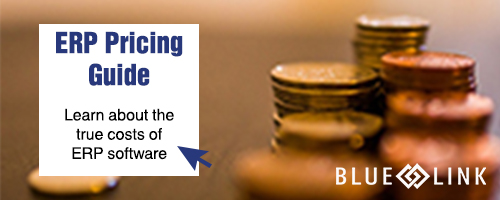With any major purchasing decision, budget is an important factor. When it comes to purchasing wholesale inventory software, sticker shock is common for those moving off of introductory systems or manual processes. However, as with any capital expenditure, buying new software should be a decision made on more than just cost - if you want to make the right investment. The same principles apply as if you were such as seeking new warehouse space. So how come cost continues to be used as a deal breaker? Before you narrow down your software options based on cost, consider the following:
Too expensive compared to what?
Expensive is a relative term. When it comes to software, make sure you think about what you’re comparing the cost to. Most comparable Tier 2 systems will fall within a similar cost range, so it's important to first identify which Tier will have functionality to meet your needs. Many companies start off with an arbitrary budget based on what they feel they should spend, and not on any real world frame of reference. Are you comparing the cost to other systems? To hiring additional employees? To purchasing more equipment?
How much will it cost you to do nothing?
Another cost to consider is the cost of doing nothing. Businesses who do not take this aspect into consideration are falling prey to omission bias - the tendency to judge harmful actions as worse than equally harmful inactions. Not purchasing software can affect costs directly by resulting in a new hire or indirectly through lost productivity. When it comes to hiring employees, good software should replace the need for additional staff which will save you more than just the cost of a system in the long run.
Let’s say that money was no object. Would proper wholesale software help solve your problem?
Eliminating cost as a factor and looking at the software objectively will help you determine if cost is really the reason for your hesitation or not. Does the software meet all your immediate requirements? Does it provide advanced functionality that will improve processes? Will it save your team time by streamlining operations? Finding a solution with the right functionality should be the most important factor to consider when looking for a new system.
What’s too expensive?
Referring back to the first point, having a budget in place based on real world data will ensure you find a solution best suited for your needs. Since companies may experience sticker shock when first speaking with software vendors, it is important to break down the costs they have outlined. Are the monthly fees too expensive? Is the implementation too expensive? Understanding exactly what factors contribute to cost will allow you to determine if there is any room for decreasing these numbers. Perhaps you may not need as many users on the new system or can get away without migrating all your historical data. Will the new system save you the cost of managing your own internal servers? If you can pinpoint what aspect of the system you find too expensive and address these thoroughly with the software vendor, you may be able to find cost savings in other areas.
All of the above points are valid, but ultimately you may still run into budget issues when speaking with vendors. After you have considered the above, and before you immediately write off a system as an option, make sure you explore your options for decreasing system costs and making your budget work for you. Some options include:
- Implementing a hosted (cloud) solution to eliminate hardware and server costs
- Only migrating historical data that is necessary
- Thoroughly evaluating your wants vs. needs
- Financing











